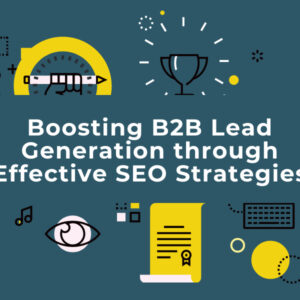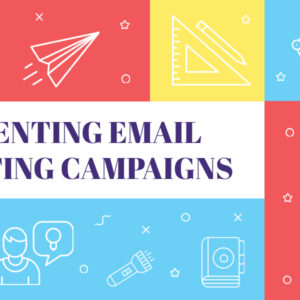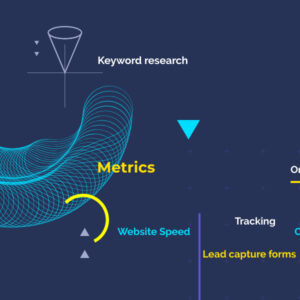
The Importance of Lead Generation for B2B Service Companies
Lead generation is a critical component of success for B2B service companies. It involves identifying and attracting potential customers who are interested in your services and converting them into qualified leads. Effective lead generation strategies can help you increase brand awareness, build a pipeline of potential customers, and ultimately drive revenue growth.
Understanding the B2B Lead Generation Landscape
The B2B lead generation landscape is constantly evolving, with new technologies, platforms, and tactics emerging regularly. It’s essential for service companies to stay informed about the latest trends and best practices in order to stay competitive and generate high-quality leads.
To effectively generate B2B leads for service companies, it is essential to understand the key components of the lead generation process. This process typically involves the following steps:
- Research: Conduct thorough market research to understand your target audience, their pain points, and their needs. This will help you tailor your lead generation efforts accordingly.
- Planning: Develop a comprehensive lead generation strategy that outlines your goals, target audience, and the channels you will use to reach them. This will serve as a roadmap for your lead generation activities.
- Execution: Implement your lead generation strategy by leveraging various tactics such as content marketing, social media, email marketing, and more. Consistency and relevance are key during this phase.
- Nurturing: Once you have captured leads, focus on nurturing them by providing valuable content and personalized experiences. This will help build trust and increase the likelihood of conversion.
- Measurement: Continuously measure and analyze the success of your lead generation efforts. This will allow you to identify areas of improvement and make data-driven decisions.
In this guide, we’ll explore a range of strategies and tactics that can help you navigate the B2B lead generation landscape effectively.
Defining Your Target Audience
Understanding your target audience and creating an ideal customer profile is vital for any business. Without this knowledge, your marketing efforts may fall flat, wasting time and resources. By identifying your target audience, you can tailor your messaging and marketing campaigns to reach the right people at the right time.
One of the key benefits of identifying your target audience is the ability to create personalized and relevant content that resonates with your customers. Use data-driven research, market analysis, and customer insights to develop a detailed understanding of their needs, desires, and pain points, you can develop messaging that speaks directly to them, increasing the likelihood of engagement and conversions.
Additionally, identifying your ideal customer profile allows you to allocate your marketing budget more effectively. Instead of spreading your efforts too thin, you can focus on channels and strategies that are most likely to reach your target audience. This targeted approach can lead to higher ROI and more efficient marketing campaigns.

Identifying Your Ideal Customer Profile (ICP)
Defining your ideal customer profile is a crucial first step in B2B lead generation. Your ICP represents the type of companies that are most likely to benefit from and purchase your services. Consider characteristics such as company size, industry, revenue, and pain points when identifying your ICP. This will help you tailor your lead generation efforts to attract the right audience.
To begin, think about actual, real businesses or individuals who are experiencing the problem you aim to solve. You can use a simple spreadsheet to collect information such as their industry, revenue, number of employees, company stage, and country, etc. Additionally, explore the possibility of creating segments within your ICP for a more targeted approach.
Conducting market research to gain more understanding of your target audience
Market research is a crucial step in identifying your target audience and understanding their needs and preferences. There are several methods you can use to gather this information, including surveys, interviews, and focus groups.
- Surveys are a great way to collect quantitative data about your target audience. You can create online surveys and distribute them to your existing customers or use paid advertising to reach a wider audience. Make sure to ask questions that will provide you with valuable insights into their demographics, preferences, and behavior patterns.
- Interviews and focus groups allow you to gather qualitative data by engaging directly with your target audience. These methods provide an opportunity to delve deeper into their motivations, pain points, and desires. By conducting interviews or hosting focus groups, you can gain valuable insights that will inform your marketing strategies.
In addition to these primary research methods, you can also utilize secondary research sources such as industry reports, competitor analysis, and social media listening tools. These sources can provide you with valuable insights into industry trends, consumer behavior, and competitor strategies.
Remember, market research is an ongoing process. Consumer preferences and behavior can change over time, so it’s important to regularly gather new data and update your understanding of your target audience.
Analyzing your existing customer base for insights
Your existing customer base can provide valuable insights into who your target audience is and what they want. By analyzing your customer data, you can identify patterns and trends that will help you refine your target audience and ideal customer profile.
Start by segmenting your customer base into different groups based on demographics, purchase history, and behavior patterns. This will allow you to identify common characteristics and preferences within each segment. Look for patterns such as age, gender, location, and purchasing habits.
Once you have identified these patterns, you can start to develop a more detailed understanding of your target audience. Look for commonalities and trends that will help you refine your ideal customer profile. For example, if you notice that a significant portion of your customers are young adults who value sustainability, you can incorporate these values into your marketing messaging.
Analyzing your existing customer base can also help you identify opportunities for upselling and cross-selling. By understanding their purchasing habits and preferences, you can tailor your product offerings and marketing campaigns to encourage repeat purchases and increase customer lifetime value.
Creating buyer personas to represent your target audience
Once you have a clear understanding of your target audience, it’s time to create buyer personas. Buyer personas are fictional representations of your ideal customers within your ICP. They help you understand the motivations, goals, and challenges of the individuals involved in the purchasing decision. By creating detailed buyer personas, you can personalize your messaging and content to resonate with your target audience.
Step 1: Demographics
The first step in creating your buyer persona is to define who they are. Start by giving them a name and a background. Include the details to the demographics of your potential customers. What age group do they belong to? Are they predominantly male or female? Where do they live? Understanding these basic demographics will give you a starting point for your audience analysis.
Step 2: Psychographics
Next, consider the psychographics of your target audience. What are their interests, values, and beliefs? What motivates them to make a purchase? Psychographic information can help you understand the emotional drivers behind consumer behavior, allowing you to create more compelling marketing campaigns.
Step 3: Behavior Patterns
In addition to demographics and psychographics, it’s important to consider the behavior patterns of your target audience. How do they interact with your brand? What are their purchasing habits? Do they prefer to shop online or in-store? By understanding their behavior, you can tailor your marketing efforts to meet their preferences and needs.
Once you have a detailed buyer persona, use it as a reference when developing your marketing strategies.

Utilizing data and analytics to refine your target audience and ideal customer profile
Data and analytics play a crucial role in refining your target audience and ideal customer profile. By analyzing the data you gather from various sources, you can gain valuable insights into consumer behavior and preferences.
Start by utilizing website analytics to understand how visitors interact with your site. Look for patterns in user behavior, such as the pages they visit, the actions they take, and the time spent on each page. This information can help you identify which segments of your audience are most engaged and which areas of your website need improvement.
Social media analytics can also provide valuable insights into your target audience. Monitor engagement metrics such as likes, shares, and comments to understand what content resonates with your audience. Additionally, use social listening tools to track mentions of your brand and industry keywords. This can help you identify trends and preferences among your target audience.
Email marketing analytics can provide insights into customer engagement and preferences. Look at open rates, click-through rates, and conversion rates to understand which emails are most effective. Use this information to refine your messaging and tailor your email campaigns to better meet the needs of your target audience.
By regularly analyzing data and analytics, you can refine your target audience and ideal customer profile over time. Consumer preferences and behavior can change, so it’s important to stay up-to-date and adjust your strategies accordingly.
Developing a messaging strategy that resonates with your target audience
Once you have a clear understanding of your ideal customer profile and buyer personas, it’s time to develop a messaging strategy that resonates with them. Your messaging should speak directly to their needs, desires, and pain points, creating a connection and driving engagement.
Start by clearly defining your value proposition. What sets your brand apart from your competitors? What unique benefits do you offer? By clearly communicating your value proposition, you can attract the attention of your target audience and differentiate yourself in the market. More on this in the subsequent chapter.
Next, consider the language and tone of your messaging. Use words and phrases that resonate with your target audience and align with their values and beliefs. For example, if your target audience values sustainability, incorporate eco-friendly language into your messaging.
Tailor your messaging to the specific needs and preferences of your target audience. Consider their pain points and challenges, and position your product or service as the solution. Use storytelling techniques to create a connection and evoke emotions that resonate with your audience.
Consistency is key when it comes to messaging. Ensure that your messaging is aligned across all marketing channels and touchpoints. This will create a cohesive brand experience and reinforce your key messages to your target audience.
Testing and refining your target audience and ideal customer profile over time
Identifying your target audience and creating an ideal customer profile is an ongoing process. Consumer preferences and behavior can change over time, so it’s important to regularly test and refine your understanding of your target audience.
One way to test your target audience is through A/B testing. Create different versions of your marketing campaigns, such as different messaging, visuals, or offers, and test them with different segments of your target audience. Analyze the results to see which version performs better and adjust your strategies accordingly.
Another way to refine your target audience is through customer feedback and surveys. Ask your customers for their opinions and suggestions. This can provide valuable insights into their needs and preferences, allowing you to make adjustments to your target audience and ideal customer profile.
Monitor industry trends and keep an eye on your competitors. Consumer behavior can change rapidly, so it’s important to stay informed and adapt your strategies accordingly. Look for new opportunities to reach your target audience and adjust your messaging to stay relevant.
Developing a Compelling Value Proposition
A value proposition is a clear statement that explains how your product or service solves a problem, satisfies a need, or provides a benefit. It is the foundation of your marketing message and plays a crucial role in attracting and retaining customers. A strong value proposition should be concise, compelling, and differentiate your brand from the competition.
To develop a compelling value proposition, you need to understand the needs and pain points of your target audience. By addressing these pain points and offering a unique solution, you can position your brand as the go-to choice for your customers.
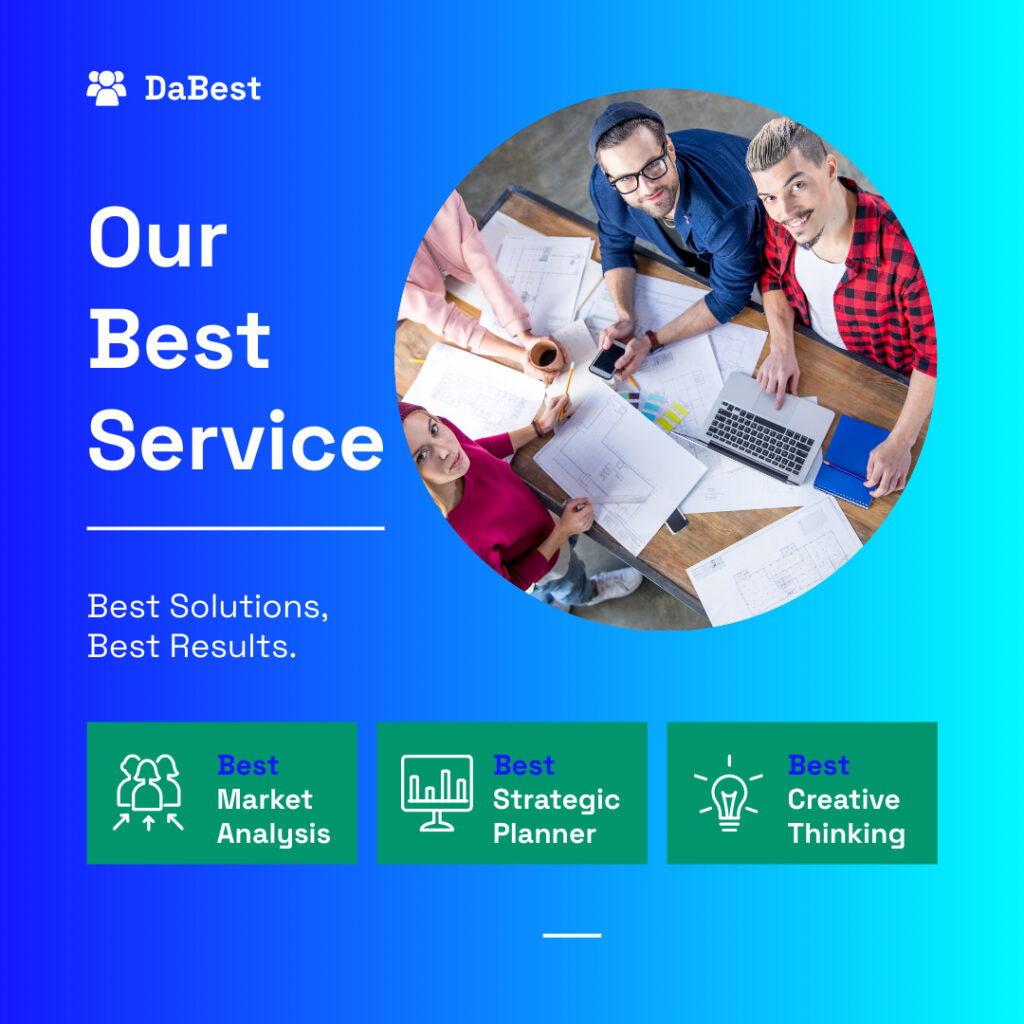
Importance of a Compelling Value Proposition
A compelling value proposition is essential for several reasons. Firstly, it helps you stand out from the competition. In a crowded marketplace, customers have numerous options to choose from. A strong value proposition sets you apart by highlighting the unique benefits and advantages your product or service offers.
Secondly, a well-crafted value proposition clearly communicates the value your product or service provides. It helps potential customers understand how your offering can solve their problems or fulfill their needs. By effectively conveying the value, you make it easier for your target audience to make a purchasing decision.
Lastly, a compelling value proposition builds trust and credibility with your audience. When customers can clearly see the benefits of your product or service, they are more likely to trust your brand and believe in the promises you make. Trust is a crucial factor in building long-term customer relationships and driving customer loyalty.
Key Elements of a Value Proposition
A strong value proposition should include the following key elements:
- Customer Focus: Your value proposition should be centered around your target audience. It should clearly address their needs, pain points, and desires. By understanding your customers, you can tailor your message to resonate with them on a deeper level.
- Differentiation: Your value proposition should highlight what sets you apart from the competition. What unique benefits or advantages do you offer that others don’t? Differentiation is crucial for standing out in a crowded market and attracting the attention of your target audience.
- Clarity and Conciseness: Your value proposition should be clear, concise, and easy to understand. Avoid using jargon or technical language that might confuse your audience. Instead, focus on communicating the benefits of your product or service in a way that is easily digestible.
Now that we’ve covered the importance of a compelling value proposition and its key elements, let’s dive into the step-by-step process of developing one.
Step 1: Research Your Target Audience’s Needs and Pain Points
Once you’ve identified your target audience, the next step is to research their needs and pain points. What challenges do they face? What problems are they trying to solve? By understanding their pain points, you can position your product or service as the solution they’ve been searching for.
To research your target audience’s needs and pain points, consider using the following methods:
- Surveys and Interviews: Conduct surveys or interviews to gather direct feedback from your target audience. Ask open-ended questions that encourage them to share their challenges and frustrations.
- Social Media Listening: Monitor social media platforms to see what your target audience is talking about. Look for common themes or recurring complaints that indicate their pain points.
- Competitor Analysis: Study your competitors to identify gaps in the market. What problems are they not addressing? How can you differentiate yourself by offering a unique solution?
Step 2: Determine Your Unique Selling Proposition (USP)
Now that you have a deep understanding of your target audience’s needs and pain points, it’s time to determine your unique selling proposition (USP). Your USP is what sets you apart from the competition and makes your product or service the best choice for your customers.
To determine your USP, consider the following questions:
- What makes your product or service unique? Identify the features or benefits that differentiate you from the competition. What value do you offer that others don’t?
- What are your strengths and competitive advantages? Assess your strengths and how they align with the needs of your target audience. What makes you the best solution for their pain points?
- What are your core values and mission? Consider how your core values and mission align with the needs of your target audience. How can you communicate these values in your value proposition?
By answering these questions, you can develop a clear and compelling USP that resonates with your target audience.
Step 3: Craft a Clear and Concise Value Statement
With your target audience, their needs and pain points, and your USP in mind, it’s time to craft a clear and concise value statement. Your value statement should clearly communicate the benefits and value your product or service provides in a way that resonates with your target audience.
When crafting your value statement, keep the following tips in mind:
- Be specific: Avoid generic statements that could apply to any business. Instead, focus on the unique benefits and advantages your product or service offers.
- Use simple language: Ensure that your value statement is easy to understand and avoids technical jargon. Use language that your target audience can relate to and connect with.
- Highlight the results: Clearly communicate the outcomes and results your customers can expect from using your product or service. How will their lives be improved or their problems solved?
By crafting a clear and concise value statement, you make it easier for your target audience to understand the benefits of your offering and why they should choose you.
Step 4: Communicate Your Value Proposition Effectively
Now that you have a compelling value proposition, it’s crucial to effectively communicate it to your target audience. Your value proposition should be integrated into all aspects of your marketing strategy, including your website, social media, advertising, and sales materials.
Consider the following tips for effectively communicating your value proposition:
- Website: Feature your value proposition prominently on your website’s homepage. Use clear and concise language that grabs the attention of your visitors and encourages them to explore further.
- Social Media: Incorporate your value proposition into your social media posts, bios, and advertisements. Use engaging visuals and compelling copy to communicate the benefits of your product or service.
- Advertising: Create ads that highlight the unique benefits and advantages you offer. Use persuasive language and compelling visuals to grab the attention of your target audience and encourage them to take action.
- Sales Materials: Ensure that your value proposition is included in your sales materials, such as brochures, presentations, and proposals. Clearly communicate the value your product or service provides and how it solves your customers’ problems.
By consistently communicating your value proposition across all marketing channels, you create a cohesive and compelling brand message that resonates with your target audience.
Testing and Refining Your Value Proposition
Once you’ve developed and communicated your value proposition, it’s essential to test and refine it to ensure it’s resonating with your target audience. A value proposition is not a set-it-and-forget-it element of your marketing strategy. It needs to be continuously evaluated and optimized based on customer feedback and market trends.
Consider the following strategies for testing and refining your value proposition:
- A/B Testing: Create different versions of your value proposition and test them against each other to see which resonates best with your target audience. Use metrics such as click-through rates, conversion rates, and customer feedback to evaluate the effectiveness of each version.
- Customer Feedback: Gather feedback from your customers to understand how they perceive your value proposition. Ask them if it effectively communicates the benefits of your product or service and if it aligns with their needs and desires.
- Market Research: Continuously monitor market trends and changes in customer needs to ensure that your value proposition remains relevant and impactful. Stay ahead of the competition by adapting your messaging and positioning based on market insights.
By testing and refining your value proposition, you can ensure that it continues to engage your audience and drive results.
Developing a compelling value proposition is a crucial step in differentiating your business and attracting customers. By understanding your target audience, their needs and pain points, and crafting a clear and concise value statement, you can effectively position your brand in the market and gain a competitive edge.
Remember, a value proposition is not a one-time task. It requires continuous evaluation, testing, and refinement to ensure it remains relevant and resonates with your target audience. By following the step-by-step guide outlined in this article, you can develop a compelling value proposition that engages your audience and drives results.
Don’t let a lackluster value proposition hold your business back. Follow this step-by-step guide to develop a compelling value proposition that resonates with your target audience and drives conversions.
Building an Effective Lead Generation Strategy
Understanding your target audience
To effectively choose the right lead generation channels, you must first understand your target audience. Who are they? What are their preferences? What platforms do they use? By gaining deep insights into your target audience, you can tailor your lead generation strategy to reach them where they are most likely to engage.
Start by creating detailed buyer personas that represent your ideal customers. Consider their demographics, interests, pain points, and buying habits. Conduct surveys, interviews, and analyze customer data to uncover valuable insights. These personas will serve as the foundation for selecting the most suitable lead generation channels.
Once you have a clear understanding of your target audience, you can move on to identifying potential lead generation channels.
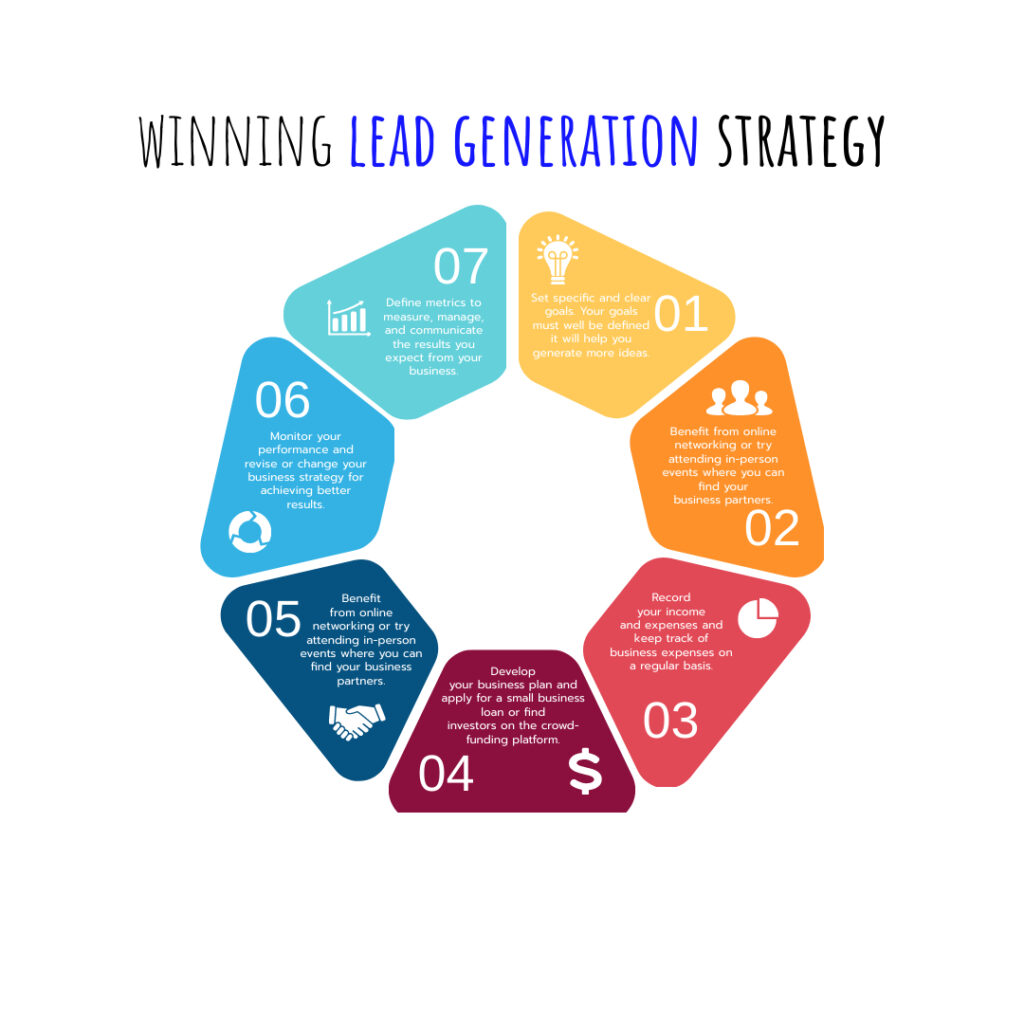
Identifying potential lead generation channels
There is a wide range of lead generation channels available, each with its own strengths and weaknesses. It’s crucial to identify the channels that align with your target audience and business goals. Here are some popular lead generation channels to consider:
- Content Marketing: Creating and distributing valuable content through blogs, videos, ebooks, and social media can attract and engage potential leads.
- Search Engine Optimization (SEO): Optimizing your website and content to rank higher in search engine results can drive organic traffic and generate leads.
- Social Media Marketing: Leveraging social media platforms like Facebook, Instagram, LinkedIn, and Twitter can help you reach a larger audience and engage with potential leads.
- Email Marketing: Building an email list and sending targeted campaigns can nurture leads and convert them into customers.
- Pay-per-Click (PPC) Advertising: Running targeted ads on search engines and social media platforms can drive traffic and generate leads quickly.
- Influencer Marketing: Collaborating with influencers in your industry can expose your brand to their audience and generate leads through recommendations.
Consider the nature of your business, the preferences of your target audience, and the resources available to you when selecting potential lead generation channels.
Evaluating the effectiveness of different channels
Once you have identified potential lead generation channels, it’s essential to evaluate their effectiveness. Not all channels will yield the same results for every business. Here are some key factors to consider when evaluating different channels:
- Reach and Targeting: How well does the channel allow you to reach your target audience? Does it offer targeting options to ensure your message reaches the right people?
- Engagement and Conversion: How likely are leads generated from the channel to engage with your brand and convert into customers? Look at conversion rates, click-through rates, and engagement metrics.
- Cost and ROI: Consider the cost of implementing and maintaining each channel. Calculate the return on investment (ROI) by comparing the cost of acquiring a lead to the revenue generated.
- Competitive Landscape: Analyze how your competitors are using different channels. If a channel is saturated with competitors, it may be harder to stand out and generate leads effectively.
By thoroughly evaluating each channel based on these factors, you can narrow down your options and focus on the most promising lead generation channels for your business.
Setting goals and objectives for lead generation
Before implementing your lead generation strategy, it’s important to set clear goals and objectives. What do you want to achieve through your lead generation efforts? Are you looking to increase brand awareness, generate more leads, or improve conversion rates?
Setting specific, measurable, attainable, relevant, and time-bound (SMART) goals will provide clarity and help you track the success of your lead generation efforts. For example, you might set a goal to increase lead generation by 20% within the next three months.
Align your goals with your overall business objectives to ensure that your lead generation efforts contribute to the growth and success of your business.
Analyzing the cost and ROI of each channel
Once you have set your goals, it’s crucial to analyze the cost and ROI of each lead generation channel. Calculate the cost per lead (CPL) for each channel by dividing the total cost of implementing the channel by the number of leads generated.
Compare the CPL across different channels to identify the most cost-effective options. Consider the lifetime value (LTV) of a customer to determine the long-term ROI of each channel. A channel with a higher CPL but a higher LTV might still be a viable option if it leads to more valuable customers in the long run.
Remember to track and analyze the data consistently to make data-driven decisions and optimize your lead generation strategy.
Testing and optimizing your lead generation channels
To ensure the effectiveness of your lead generation channels, it’s important to continuously test and optimize them. A/B testing can help you identify the most effective variations of your campaigns, landing pages, and lead capture forms.
Experiment with different messaging, visuals, offers, and CTAs to see what resonates best with your target audience. Use analytics and tracking tools to measure the performance of each variation and make data-driven decisions.
Regularly monitor the performance of your lead generation channels and make adjustments based on the data you collect. Optimization is an ongoing process that will help you maximize the results of your lead generation efforts.
Selecting the most suitable channels for your business
Based on the evaluations, goals, and optimizations, it’s time to select the most suitable lead generation channels for your business. Consider the insights gained from understanding your target audience, evaluating different channels, and testing their effectiveness.
Focus on the channels that have proven to generate high-quality leads and align with your business goals. It’s important to strike a balance between reaching a wide audience and targeting a specific niche to ensure the highest conversion rates.
By selecting the most suitable lead generation channels, you can maximize your efforts and generate a steady flow of qualified leads for your business.
Implementing and tracking your lead generation strategy
With your lead generation channels selected, it’s time to implement your strategy. Create a detailed plan that outlines the specific tactics, content, and campaigns you will use for each channel. Allocate resources and set deadlines to ensure a smooth execution.
Track the performance of your lead generation efforts using analytics tools and CRM systems. Monitor key metrics such as leads generated, conversion rates, cost per lead, and revenue generated. Regularly review and analyze the data to make informed decisions and optimize your strategy further.
Selecting the right lead generation channels is a crucial step in driving high-quality leads and increasing your conversion rates. By understanding your target audience, evaluating different channels, and continuously testing and optimizing your strategy, you can maximize the effectiveness of your lead generation efforts.
Remember, every business is unique, and what works for one may not work for another. Regularly reassess your lead generation strategy, adapt to changes in your target audience and industry, and stay up to date with emerging channels and trends.
Now that you have a step-by-step guide to selecting the right lead generation channels, it’s time to take action. Start implementing these strategies and watch as your business grows with a steady stream of qualified leads. Good luck!
Ready to take your lead generation efforts to the next level? Contact us today to learn how our expertise can help you achieve your goals.
Here are some more articles to help you implement your B2B Lead Generation Strategy
Optimizing Your Website for Lead Generation
Implementing Email Marketing Campaigns
Driving Business Growth with LinkedIn: The Ultimate B2B Lead Generation Strategy
Boosting B2B Lead Generation through Effective SEO Strategie
Maximizing Your PPC Campaigns with Competitor Analysis: A Strategic Approach


